-
Lavender Pruning, Propagating & Growing Guide for beginners
 Lee Burkhill: Award Winning Designer & BBC 1's Garden Rescue Presenters Official Blog
Lee Burkhill: Award Winning Designer & BBC 1's Garden Rescue Presenters Official Blog

Lavender is one plant that people are immediately drawn to in gardens. Lavender has beautiful aromatic foliage, bringing heady scents to the garden, along with purple spikes of flowers. It has many uses, whether as an herb, aromatherapy for the home, sensory applications as you brush past it or just as a beautiful relaxing colour palette in the garden.
This is my ultimate lavender growing and care guide. Whether a beginner or an expert gardener, this guide will show you how to grow, care for and prune lavender for years of enjoyment in your garden!
This page contains affiliate links for products I use and love. If you take action (i.e. subscribe, make a purchase) after clicking a link, I may earn some gardening commission which helps me keep the Garden Ninja Blog free for all.
Lavender is a common name for the plant genus Lavandula. Comprising of a mix of herbaceous perennials, shrubs and subshrubs. Lavandula comprises of 47 different plant species. Lavender/Lavandula is part of the mint family Lamiaceae.
Lavender belongs to the same aromatic herb group as sage, mint and deadnettles.
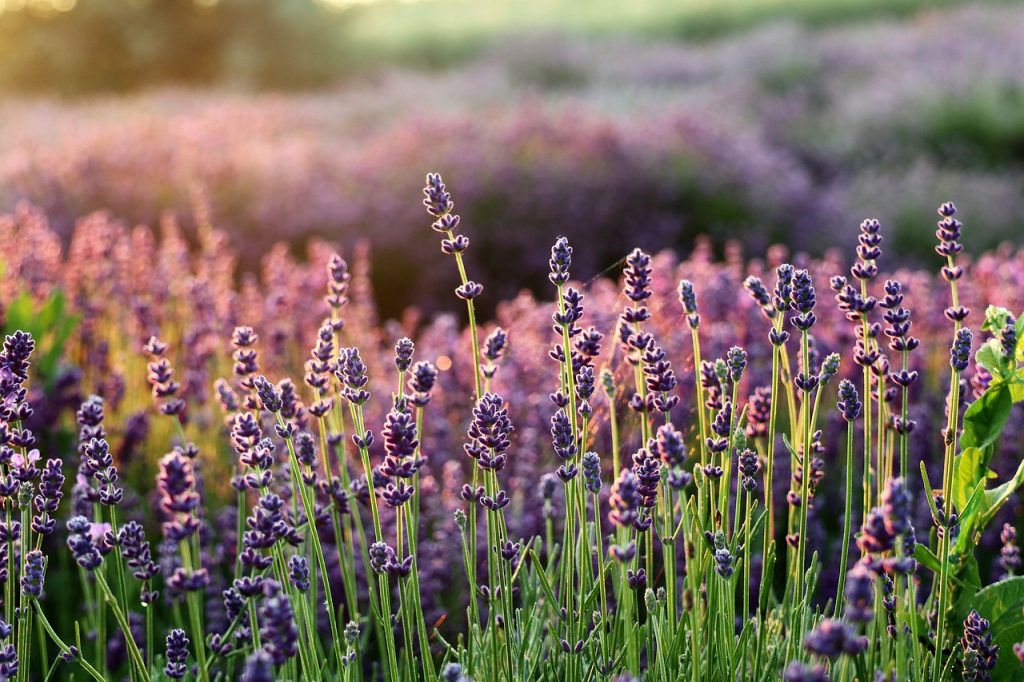
For the most part, lavender is considered an ornamental plant that is used as a culinary or sensory herb.
Lavender is a plant found in the Mediterranean and other warm regions such as East Africa, Asia and India. It's a hot garden plant requiring full sun and warm conditions to thrive.
Lavender flowers are a whorl of petals on a flower spike. Making a tall, thin spear of beautiful purple or pink flowers. French lavender has wing-like bracts on the top of the spike, which are often confused with petals.
As lavender is a Mediterranean plant, it requires conditions similar to its native geography. As with all plants choosing the right plant for the right place is key.
You may want to grow lavender in your garden, but you do need the following conditions to grow lavender plants successfully.
Growing Conditions for Lavender:
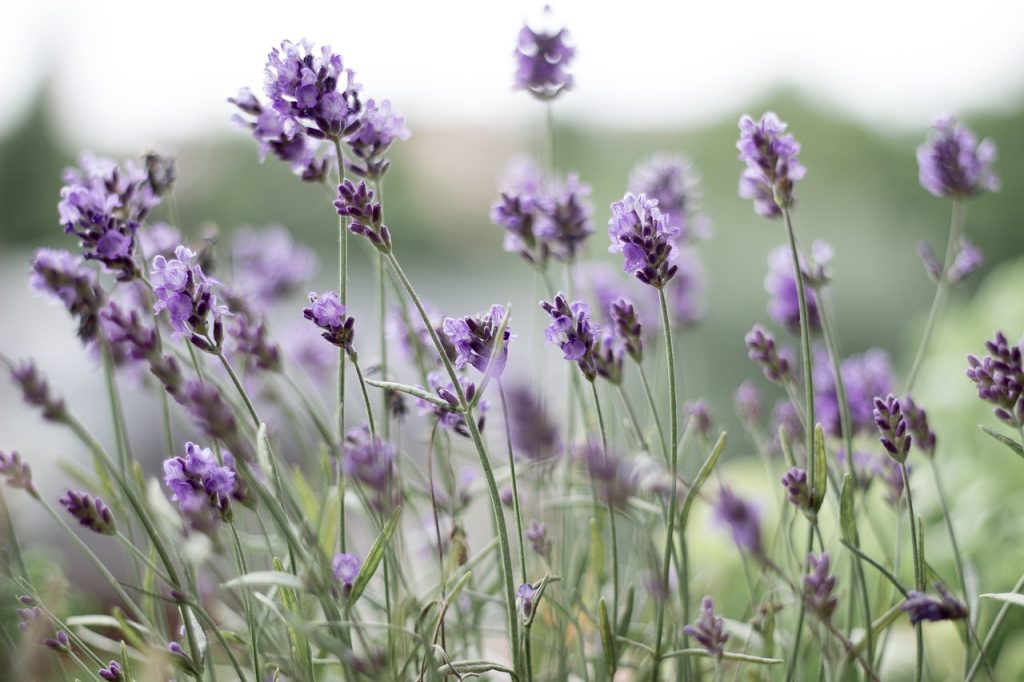
With the above warm and bright garden conditions, lavender will thrive and provide gorgeous flowers and that infamous lavender scent as you brush past them. As it's a hot climate plant, you want to mimic these conditions to get the best out of whichever lavender type you are growing.
Lavenders don't require huge amounts of plant feed; other than some pruning each year, they need very little attention. Only water them when they are about to dry out fully. Lavenders are a great plant for forgetful or even neglectful gardeners!
If you're considering growing lavender but have the following garden conditions, they will struggle or, worst case, die after planting.
Conditions lavenders hate are:
If you don't have the right conditions for growing lavender, why not consider growing them in pots where you can move them to the sunniest parts of your garden? It also means you can experiment with the best position for your lavenders. By planting in pots, you can choose a light peat-free compost mixed with some grit or perlite to provide the free-draining soil conditions that lavender plants love.
Lavender responds well to yearly pruning. By pruning your lavender each year, you can ensure that it stays neat, tidy and full of flowers.
The best time to prune lavender is once it finishes flowering in Autumn.
All you need to prune lavender is some sharp secateurs, a bucket for your clippings, and a clear, frost-free, dry day. Let's look at the steps needed to prune lavender correctly.
It's important that you have the right tools, such as clean, sharp secateurs. Using old, dirty, or blunt secateurs will simply crush, tear and damage the plant. Leading to potential plant infection, injury or plant dieback. Taking 5 minutes to clean and sharpen your secateurs will prevent this from happening.
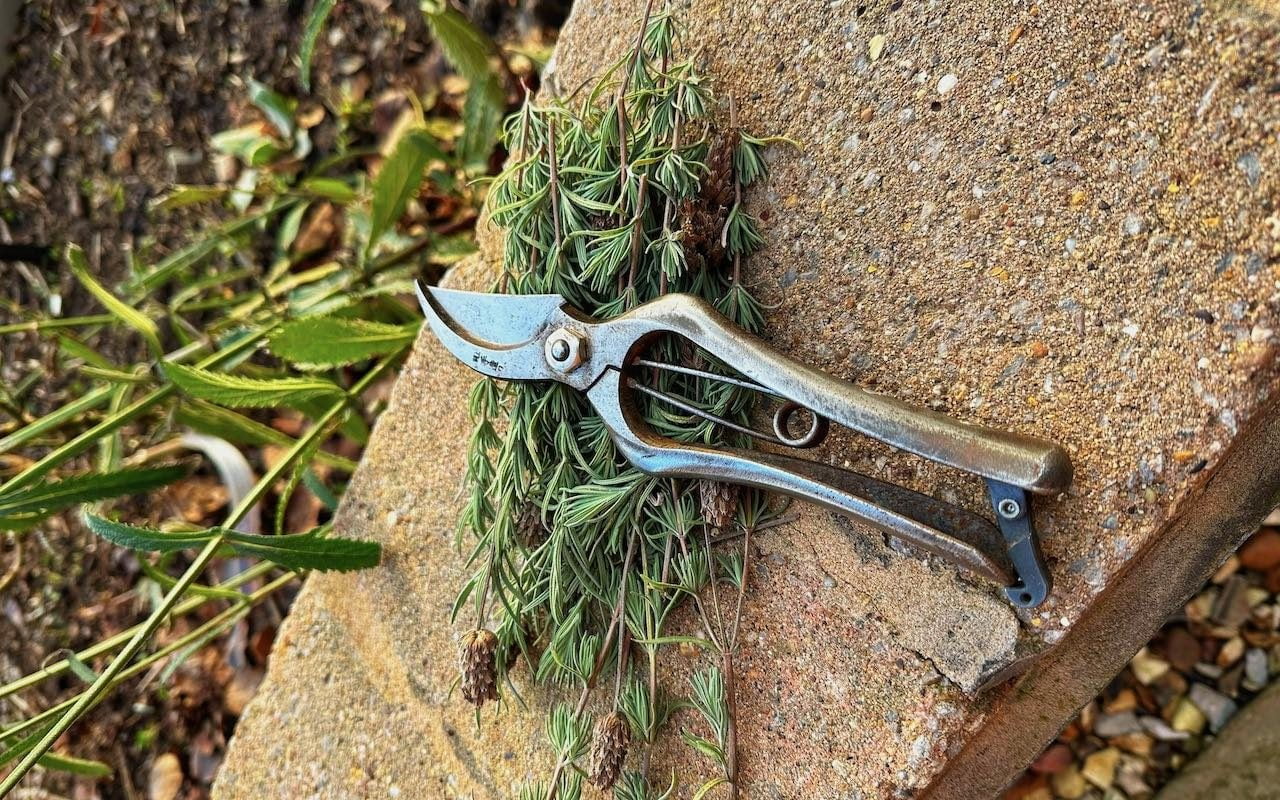
When pruning lavenders, avoid cutting back into old woody or brown stems. These older stems don't usually regenerate. If you cut back to woody growth, that lavender stem won't regrow. Take your time to identify how far up the lavender shrub the brown woody material is.
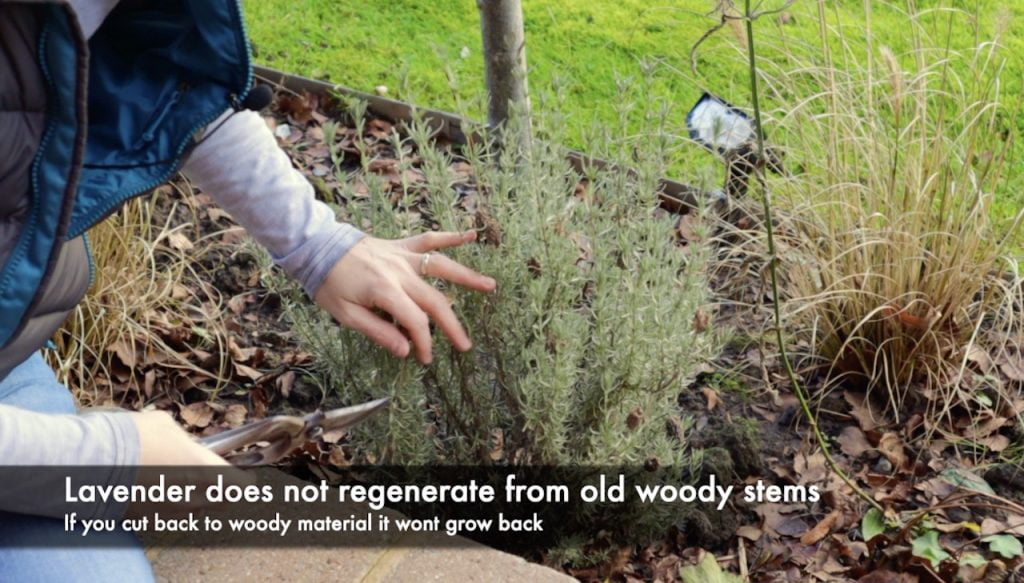
Make a note to cut above that woody growth only. You can see the woody growth above at the base, running for about 3 inches upwards.
Lavender pruning takes place on this year's fresh, leafy growth. You can see the green growth is different from the brown growth as it is soft and flexible compared to woody stems.
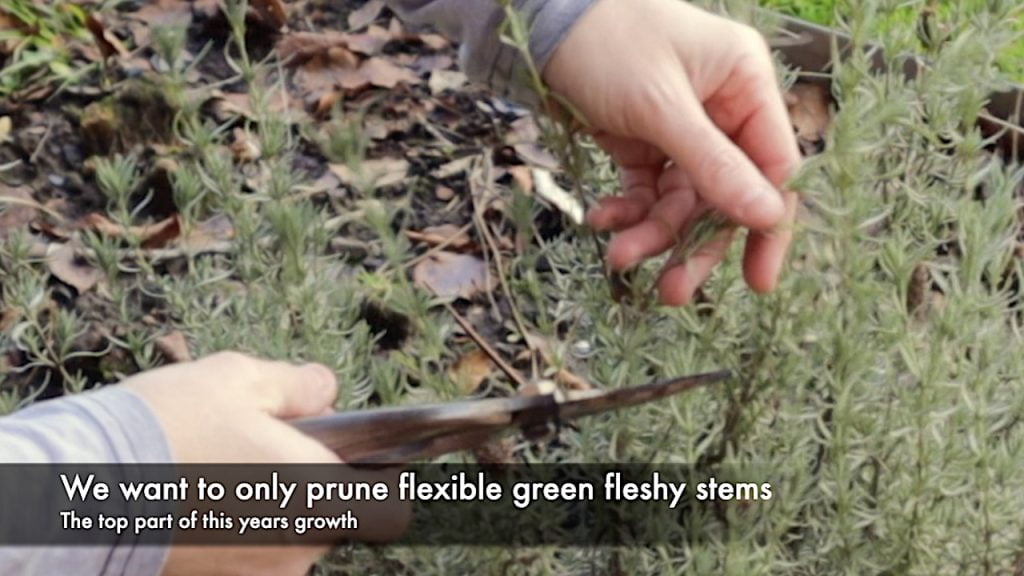
Stand back and familiarise yourself with this fresh growth. Now, get ready to prune!
Did you know that you can take my course and learn how to become a Garden Ninja yourself? Click here for details
We aim to take back 1/3 of this year's growth all over the lavender shrub. Using your sharp secateurs trim of 1/3. This includes removing spent flowers from this year.
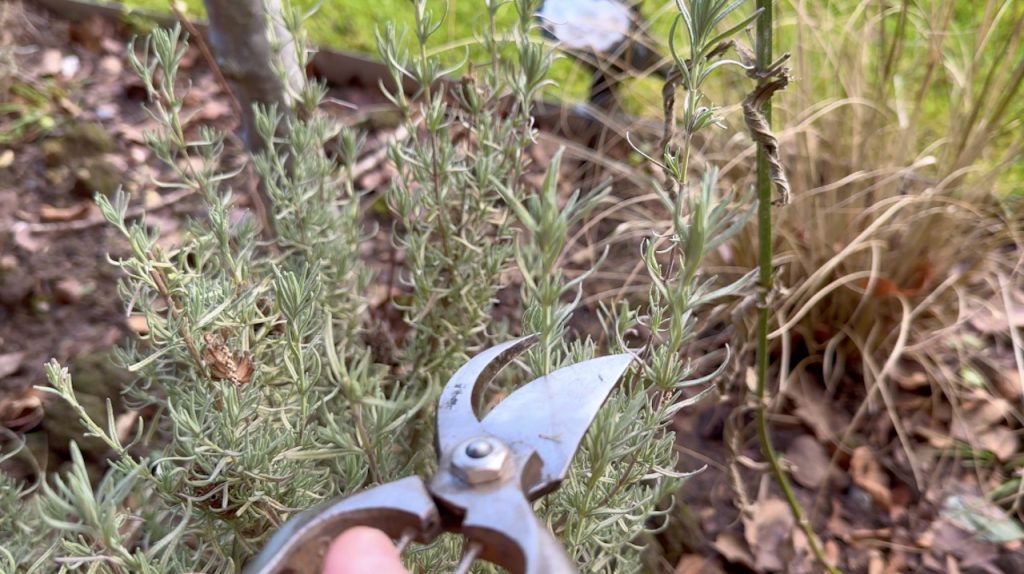
Taking off this 1/3 it helps keep the lavender in a neat shape and prevents winter or frost winds from damaging the lavender before spring arrives.
Always keep standing back to check the overall balance of the pruning. If you're a beginner gardener it's best to take your time when doing any pruning and keep standing back to see the shape. You want an even prune across the shrub to create a lovely loose spherical shape.
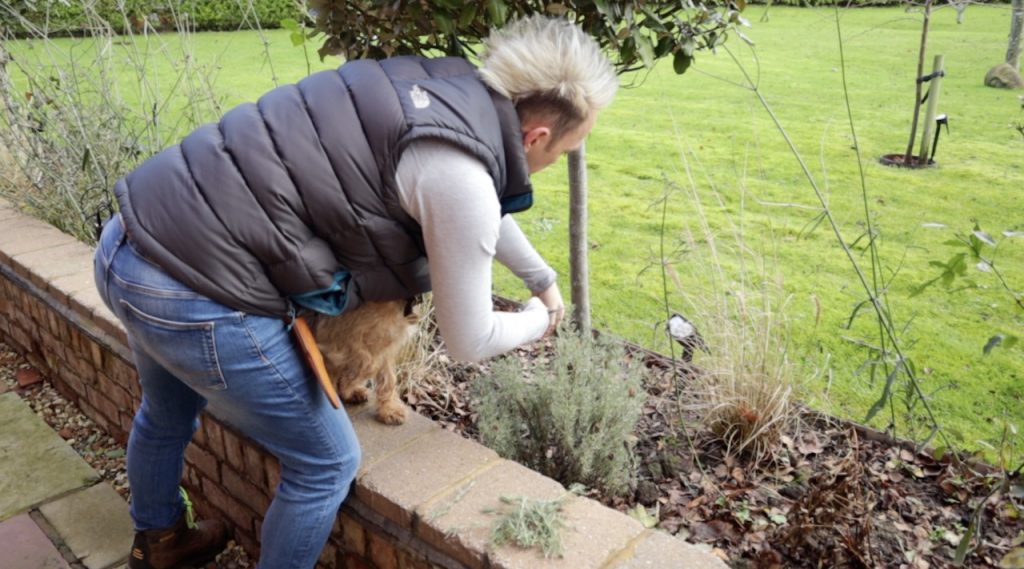
Sometimes, it's easier to see pruning by before and after photos showing the changes in the plant. Below are two examples of how I have pruned this lavender. You can see that I have followed the following pruning rules:
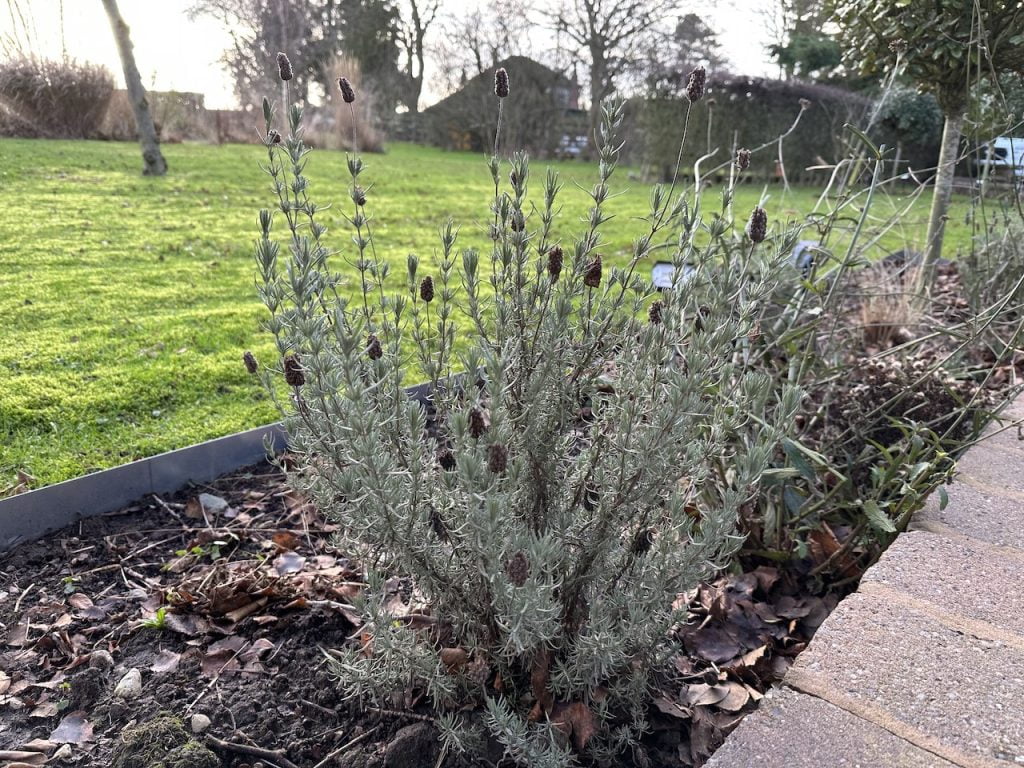
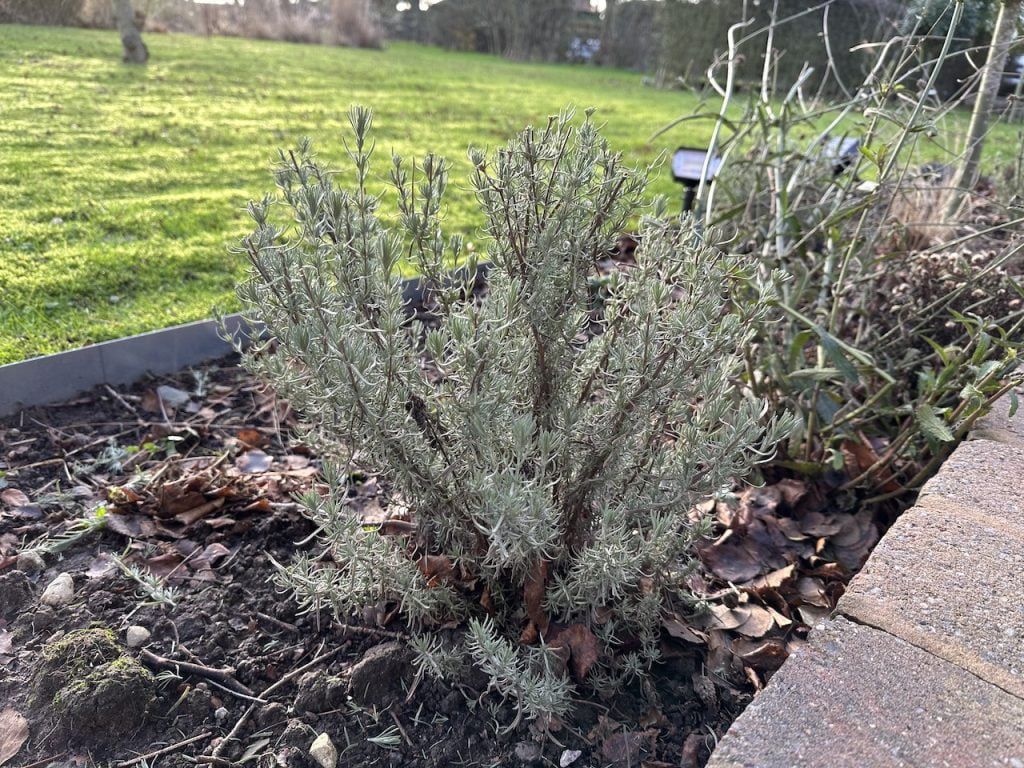
Can you see how it's been reduced, the flowers removed, and it has a much more compact shape? All ready for next year's fresh growth and lavender-scented flowers.
The main difference between English and French lavenders is their hardiness (how well they survive low temperatures) and their flowering duration (the length of time they flower for). Depending on which of these requirements you need, you can pick between the two different types of lavender to best suit your needs. Alternatively, like me, you can use both in the garden to get the best of both worlds!
English lavender is far hardier than French lavender, meaning it can survive lower temperatures. It has a much more dainty appearance, with its flowers on long, thin stems with delicate silver-grey foliage. English lavender flowers in July / August for 4-6 weeks, depending on the weather. An example of English lavender can be seen below.
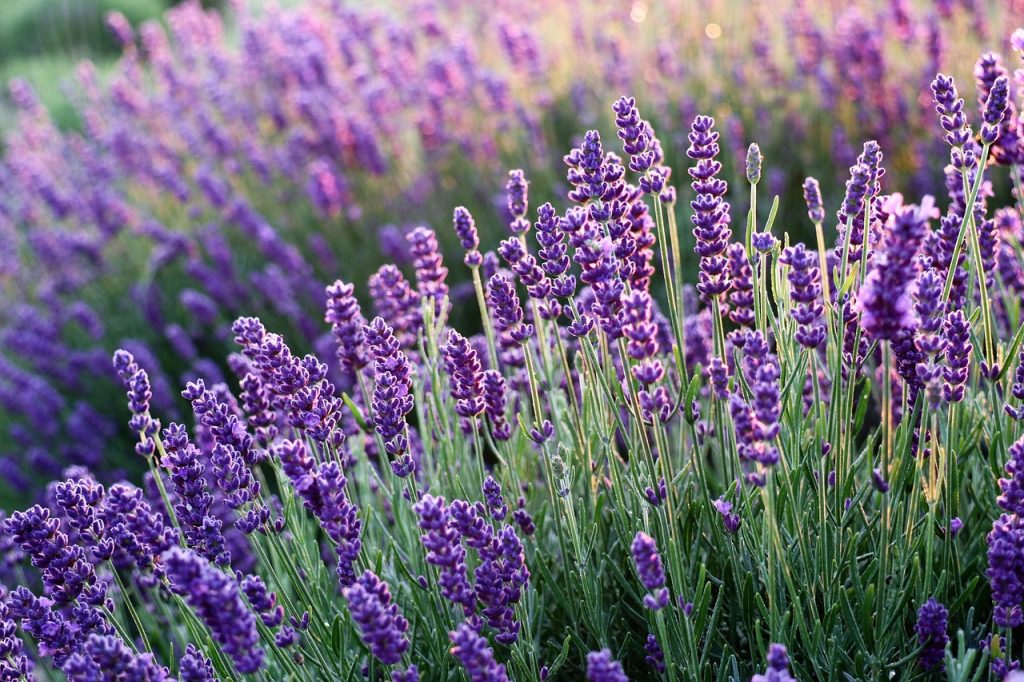
There are two main types of English lavender: angustifolia and x intermedia (the x stands for hybrid). Depending on your space or scent requirements, you may pick one over the other. Whether you want a smaller species or something taller and elegant. The main differences between the two English lavender species are:
Lavandula angustifolia - Bushy, hardy UK variety and is the shorter, stockier lavender up to 50cm tall
Lavandula × intermedia - is slightly later flowering than angustifolia and taller 75cm and above
Here are some English lavender species to try in your own gardens:
French lavenders are far more blousey (a term used for frilly, fluffy or gregarious flowers), having a much bigger and fatter flower spike. French lavenders have bracts (a form of a modified leaf) which can look a bit like wings sticking out the top. French lavender flowers profusely between April and September in the UK.
They are bushier than English lavender but not as hardy. In fact, most French lavenders are not fully frost-hardy and so may need winter protection if your garden is exposed. French lavenders don't live as long as English lavenders.
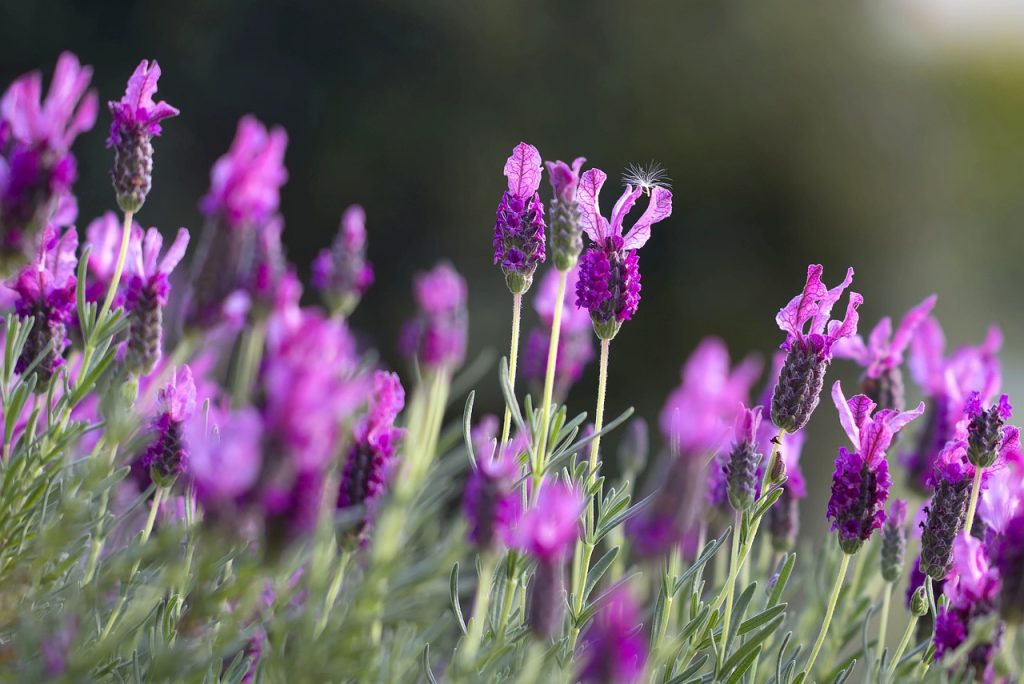
The French are famous for their love of lavender and ideal growing conditions in the south of France. French lavender is sometimes referred to as Spanish lavender, particularly in America. However, you can spot French lavender a mile off by the flowers and by identifying the stoechas species when looking at plant labels.
Below are a few gorgeous French lavenders to try.
Lavender is one of the easiest shrubs to take cuttings from to propagate (create more) plants for free. The best way to propagate lavender is between June and September, when it is actively growing. Follow the below steps to propagate lavender from heel cuttings, or watch my softwood cutting video guide below.
Identify a side shoot on your actively growing lavender and select a non-flowering side shoot. This ensures that the cutting doesn't have a flower bud about to open. Using this will divert energy away from rooting and to the flower instead. Alternatively, take your cuttings in May before the flower buds have formed.
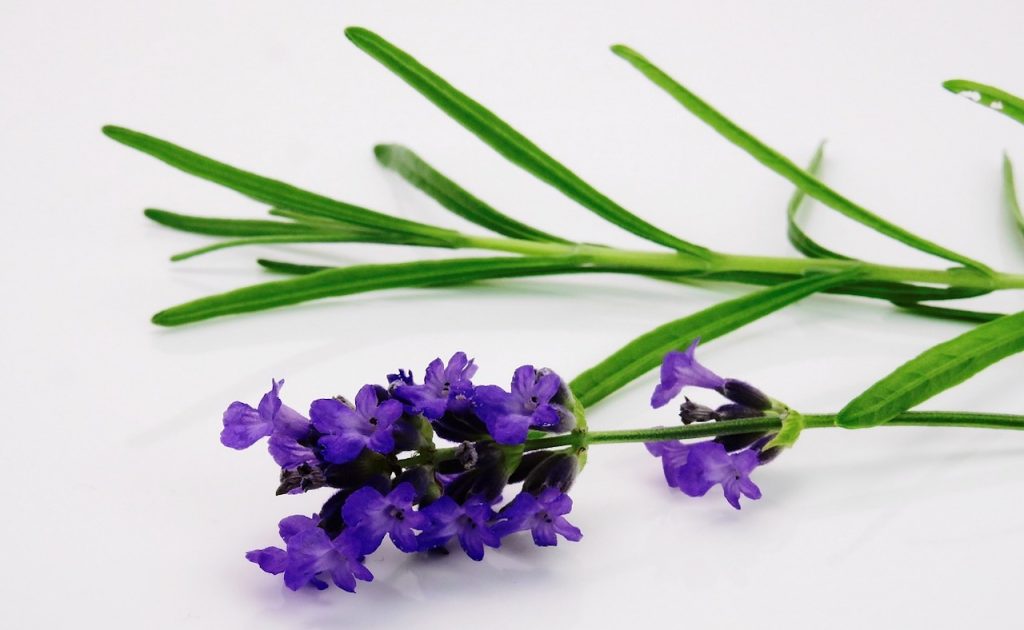
Pull off this cutting carefully. When pulling, you should find that a heel or slither of the main plant comes off as you pull the side shoot away from the main stem. The reason why you want this heel is that it's full of hormones that will root easier.
You can simply take cuttings with secateurs, but you may need some rooting hormone is no heel is present. Remember which way up your cutting goes so you plant the correct end in the pot.
Remove the leaves from the base of the cutting with a knife or scissors, leaving either 2 or 3 sets of leaves at the top. This ensures that you can bury the cuttings stem, and the leaves don't waste energy by simply rotting underground.
Place your cuttings around the edge of a pot. Buring their bare bases into the growing media. Putting them near the edge of the pot keeps them warmer and gives more drainage compared to being put in the centre of cold, wet compost.
Place them 1cm apart to give enough space to root. Water them well and cover them with a plastic bag and place them somewhere warm. Ensure they do not dry out, and remove the bag each week to allow fresh airflow.
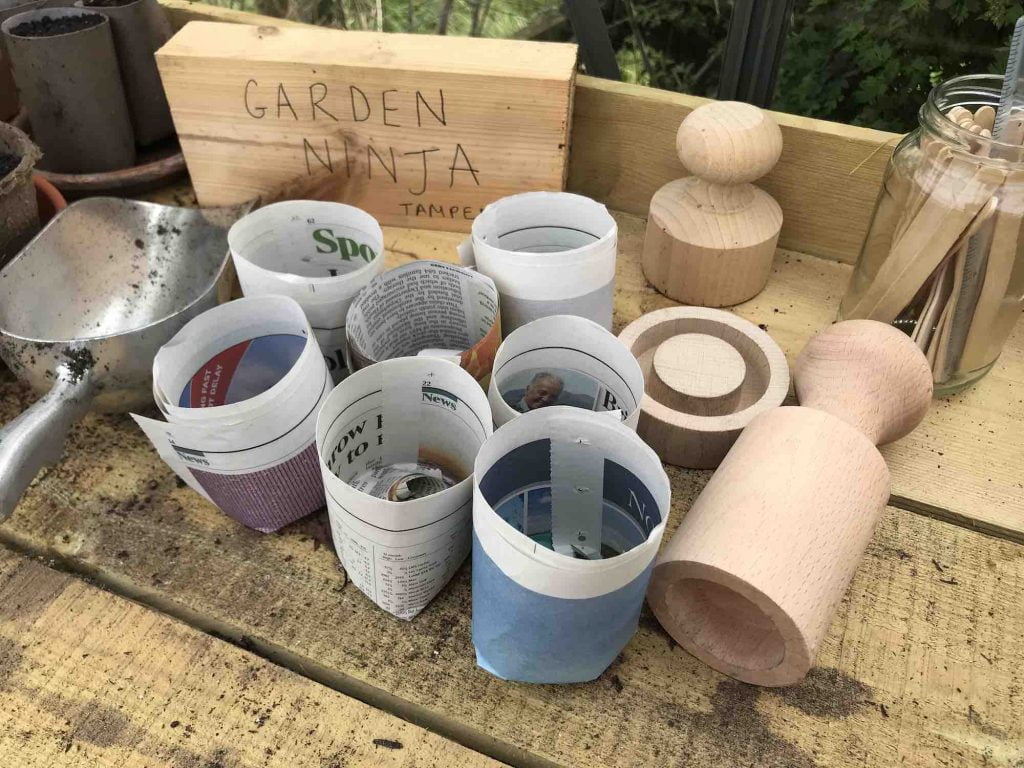
After a few weeks, you can cut the corner off the plastic bag to allow more ventilation in and stop mould from appearing.
When the roots come out the bottom, it's time to pot them on. You can follow my guide below to show you how. Keep growing them somewhere warm and overwinter them in a cold frame or greenhouse.
Plant out the lavenders the following year in springtime after the last of the frosts.
Any time between 4 and 6 weeks. You can tell when they have rooted as you will see small roots coming out of the plant pot's drainage holes. You may also see fresh vertical growth from the plant with new leaves or side shoots.
Lavenders are not the most durable of plants and usually live for between 5 and 10 years. This all depends on how often you prune them, the weather they are exposed to and other environmental factors.
If you prune your lavender well each year and pick English hardy varieties, then you could get from 15-20 years of life out of them before needing to replace them. Usually, we replace them because they have grown very woody, and the new growth is sparse.
The good news is lavenders are so easy to propagate via cuttings. So when your lavender gets to 4 or so years old, consider taking a number of cuttings to help replenish your stocks.
The quick answer is no, not easily. Lavender can be pruned, but hard pruning (cutting back into old, woody stems) should be avoided at all costs. Lavender doesn't regenerate well or sometimes from old wood, and cutting too far back may prevent new growth. I've seen so many Social Media posts on Instagram, TikTok and YouTube of supposed 'Garden Experts' hacking them right back to old wood. With plenty of followers following suite and then ruining their lavenders.
Instead, it's recommended to do a light prune after flowering, trimming back about a third of the new growth without cutting into the woody base. Go easy with Lavender. She doesn't appreciate or tolerate hard pruning!
If lavender becomes too leggy or woody, you can gradually shape it by pruning lightly each year, but avoid cutting into bare stems. Regular pruning helps encourage bushy growth and prolongs the plant's lifespan.
Before rushing out to the garden centre to buy lavender, it's important that we make sure we're picking the right plants for the right place. When buying lavender from a nursery or online garden centre, you must look out for the following things:
Lavender has several herbal and aromatic uses. Whether used in dried flowers or cuttings, they are taken to help provide a relaxing scent around the home. Lavender flowers can even be infused into wax, oils or creams so they can be used in the home. Lavender is known for its relaxing properties, whether thats for treating stress, insomnia, sickness or even nausea.
Here are a few examples of what lavender can be used for:
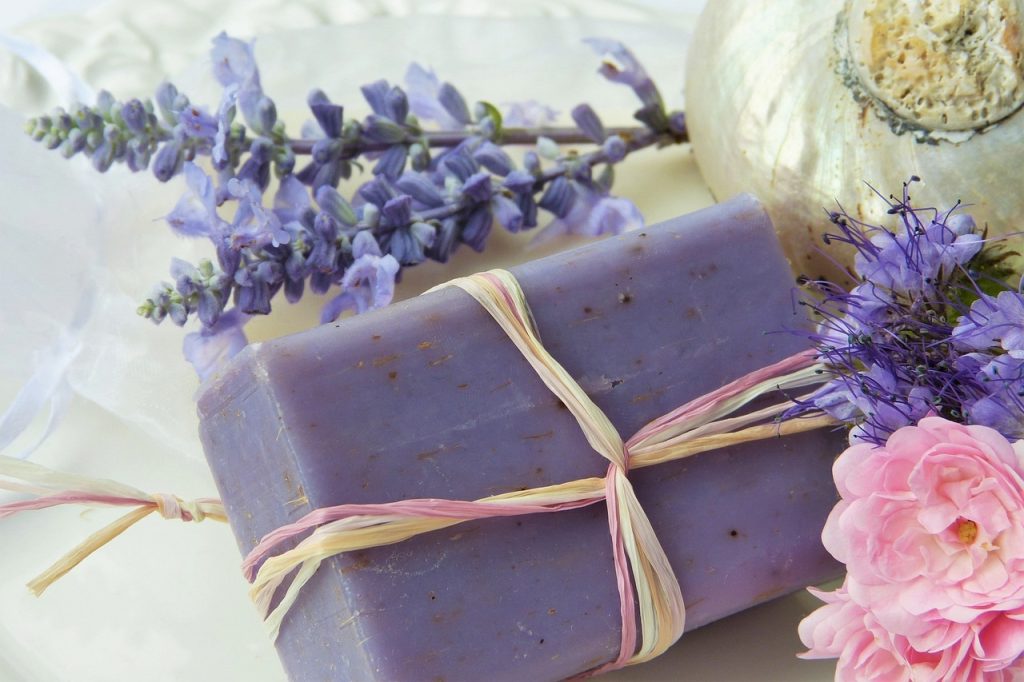
Lavender works really well in baking when the flowers, usually dried, are added to cake batter or even icing. They have a bright, light floral taste. Even adding lavender to oil when cooking chicken or roasted vegetables adds a unique aromatic twist to your cooking!
Lavender is a super tough and easy shrub to look after, even as a beginner gardener. However, there can be a few pests and diseases that can appear from time to time. Here's a more detailed overview of the common pests and diseases of lavender plants, along with their solutions:
These small, soft-bodied insects feed on the sap of lavender plants, especially new growth and flower buds. As they feed, they excrete honeydew, which can lead to the growth of sooty mould. Signs of aphid infestation include curled leaves, stunted growth, and distorted flowers. To control aphids, you can spray affected plants with a strong jet of water to dislodge them or use insecticidal soap or neem oil. Encouraging natural predators like ladybugs can also help keep aphid populations in check.
Leafhoppers are tiny, wedge-shaped insects that suck sap from lavender leaves, causing them to turn yellow or brown and curl up. They may also transmit diseases as they feed. Prune away heavily infested areas and use insecticidal soap or neem oil to control leafhoppers. Introducing beneficial insects like lacewings or predatory wasps can also help manage leafhopper populations.
Root rot is a fungal disease that affects lavender plants when the soil remains consistently wet or poorly drained. The fungus infects the roots, causing them to rot and leading to symptoms such as wilting, yellowing leaves, and plant death. To prevent root rot, ensure lavender is planted in well-draining soil and avoid overwatering. Consider amending heavy clay soils with organic matter to improve drainage.
Downy mildew is a fungal disease that affects lavender plants, causing greyish-purple fuzzy growth on the underside of leaves. Infected leaves may turn yellow or brown and eventually drop from the plant. To prevent downy mildew, provide good air circulation around plants by spacing them appropriately and avoiding overcrowding. Water plants at the base to keep foliage dry, as moisture on leaves can promote the development of the disease. Fungicidal sprays may be necessary to control severe infections.
Fusarium wilt is a soil-borne fungal disease that affects lavender plants, causing wilting, yellowing, and eventual death. The fungus infects the plant's vascular system, disrupting water and nutrient transport. To prevent Fusarium wilt, avoid planting lavender in the soil where other susceptible plants have been affected by the disease. Practice crop rotation and avoid overwatering or waterlogged conditions, as the fungus thrives in moist environments. Don't confuse this with a lack of nitrogen deficiency, which can also turn lavender leaves yellow. Nitrogen deficiency can be cured by a suitable plant feed.
Proper cultural practices, such as providing optimal growing conditions, prompt pruning and practicing good garden hygiene, can also go a long way in preventing problems before they occur with lavender.
Lavender is a classic staple of any cottage or sensory garden. Providing it has full sun and free-draining soil, lavender can be grown pretty much anywhere. Its heavy scents mean that walking past it in your garden instantly brings a sense of calm and peace. Lavender is easy to grow and propagate, making it an excellent beginner gardening shrub. So, what's stopping you from growing lavender? If you're already a fan, let me know in the comments below!
Happy Gardening!



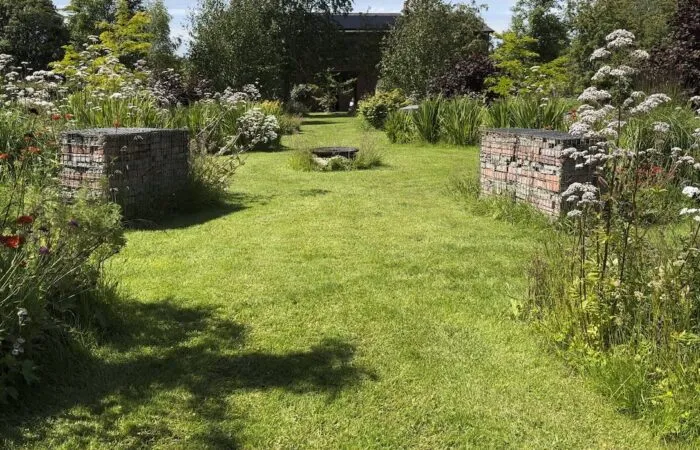
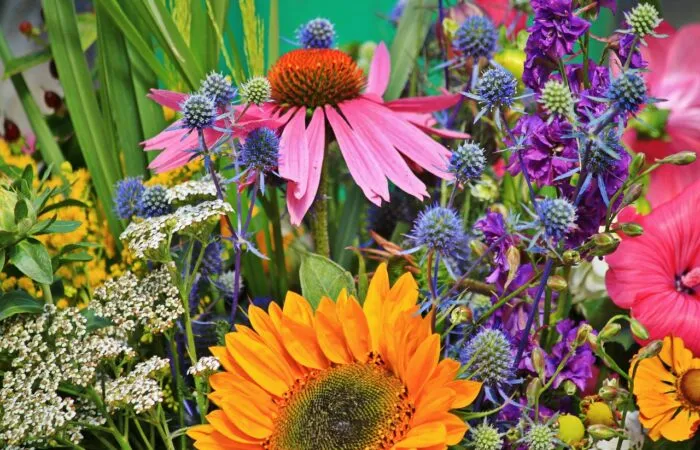
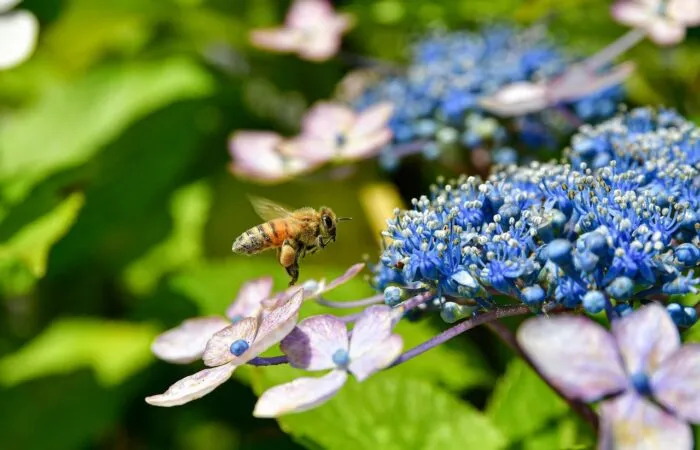
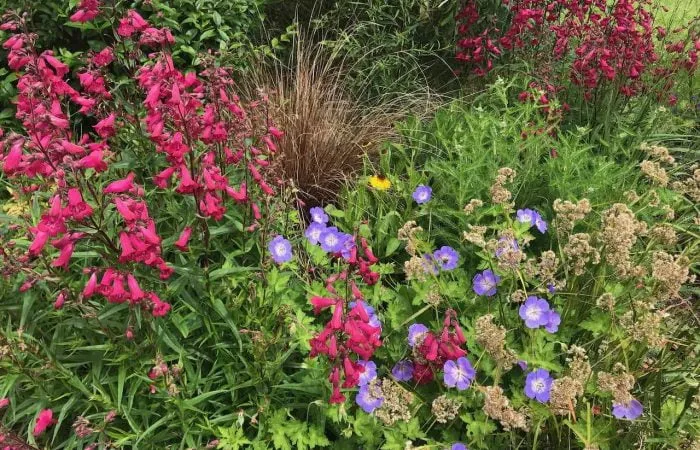
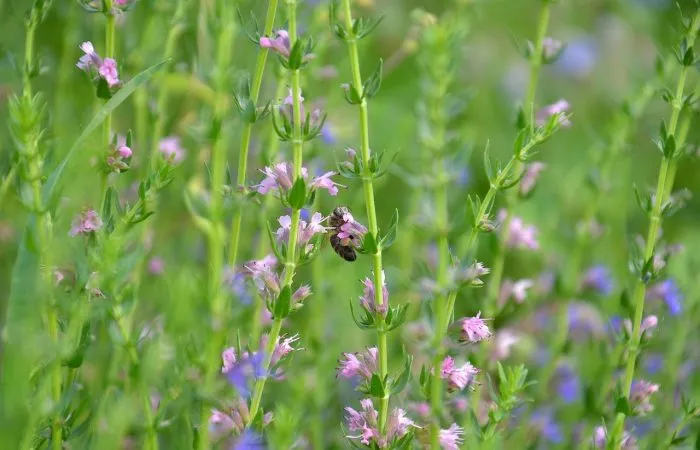
JOIN THE NINJAS

Be the first in line for new Guides, Discount codes and Offers